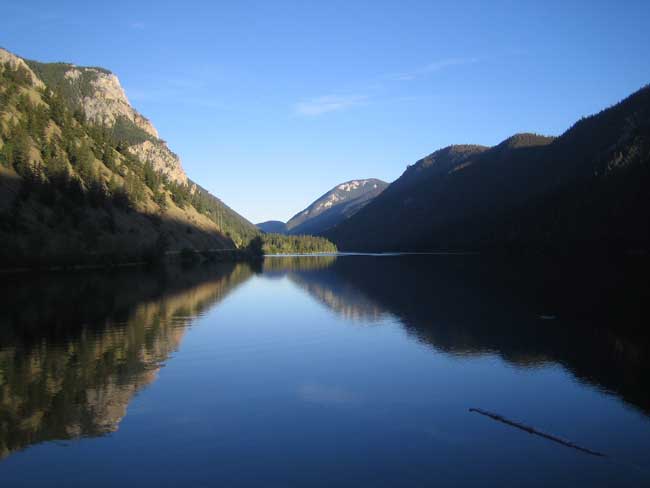Scientists Use Australian Lakes to Aid Search for Life on Mars

The types of environments that exist on Mars and whether ornot they are conducive to sustain life are still big mysteries for scientistswho study the red planet. Until scientists can study Mars environmentsfirst-hand, the next best option is to study Earth environment ?analogs? thoughtto closely resemble Mars.
In a recent study published in the journal Astrobiology, scientistsconducted the first microbiological survey of Mars analog lakes in WesternAustralia. These natural acid saline lakes, the authors say, could be similarin some respects to past Martianenvironments. They also may represent what conditions were like on Earthbillions of years ago.
?From the data that is coming back, it seems that there areportions of Mars that probably had acidic, saline waters,? says lead authorMelanie Mormile of the Department of Biological Sciences at Missouri Universityof Science and Technology. ?If there ever was life on Mars,that life would have to have the mechanisms that would thrive in hypersalineenvironments.?
Many Mars analog studies are taking place all around theworld. For example, scientists from the SETI (Search for ExtraterrestrialIntelligence) Institute are exploring high-altitude lakes in the Andes mountainrange in Bolivia and Chile. The PavilionLake Research Project ? a joint effort between NASA and the Canadian SpaceAgency ? is an analog lake project to study modern microbialites in PavilionLake in British Columbia, Canada.
?Analog studies of any sort are really the key and usefulfor getting fundamental information about the capabilities of life,? saysAllyson Brady of McMaster University and a scientist with the Pavilion LakeProject. ?Earth is the best study we have at the moment, the most accessiblestudy.?
Most analog studies, according to Mormile, focus onconditions that have a neutral pH or one that is slightly alkaline. The focuson natural acidic lakes, therefore, makes Mormile?s new study unique.
During the Austral winter of 2005, Mormile and hercolleagues traveled to Australia and collected water samples from 11 lakes thatvaried in pH from very acidic to alkaline.? Their first goal was to get anoverall picture of the types of microbial life in these environments.
Get the Space.com Newsletter
Breaking space news, the latest updates on rocket launches, skywatching events and more!
To analyze the diversity of the microbial communities, theteam had to develop what are called ?clone libraries,? or gene banks of DNAsequences. The libraries were developed using samples from four of the 11lakes: Twin Lake East, Dead Kangaroo Lake, King Lake and Pink Lake. The pH ofthese lakes ranged from acidic (2.7) to moderately alkaline (8.2).
The water samples brought back to the laboratory werecentrifuged, and DNA was extracted from the resulting pellet of organicmaterial. The team then used the polymerase chain reaction (PCR) method toamplify the genetic material. Mormile says the amplification was carried out onthe 16S rRNA gene.
?The reason why those particular genes are used is becausethey are pretty conserved among all living organisms,? explains Mormile. ?We?retrying to get some kind of an idea of the evolutionary background to understandwho is more closely related to whom.?
The scientists used their clone libraries to help identifythe DNA sequences extracted from their samples, to determine what sort oforganisms the DNA came from. The team looked at the percent similarity ? inother words, how similar a 16S rRNA gene in their sample was to a knownorganism?s gene. If the similarity was above 97 percent, the gene from thesample was probably the same species as the known organism. If the similaritywas below 97 percent, the sample probably represented a new species. If the similaritywas below 93 percent, the sample was probably a new genus.
From samples taken at the four lakes, a total of 84 genesequences were analyzed. Of that number, eight could represent new species and 35could be new genera. From this analysis, the scientists concluded that thediversity of the microbial communities relates directly to the diversity of thewater geochemistry from one lake to the other. The lakes in which the water waschemically more complex (containing more minerals) had a greater variety ofmicrobial life.
?A lot of analog research, to some extent, is (trying to)understand the environments that bacteria live in,? says Brady. ?Bacteria caninhabit practically anywhere and everywhere. The range of habitats that bacteriacan live in is amazing.?
One day in the not-too-distant future, scientists will be ableto study rock and soil samples obtained directly from Mars. NASA?s long-termMars exploration program envisions launching a Marssample return mission by 2020. Until such a mission is launched andsuccessfully returns back to Earth, analog studies offer the crucialpreparation scientists need to study Martian soil samples.
?If you actually get samples from Mars, how would you knowwhat to look for?? asks Brady. ?What kinds of evidence would you look for that showedthere was life in the past? These analog studies give us some fundamentalinformation to address those questions.?
The fact that an array of microorganisms can survive, andsometimes thrive, in extreme environments with low pH, highly saline,metal-rich waters exposed to high levels of UV radiation gives scientists hopein finding traces of lifeon Mars.
- Video Show - Did Mars Have Life, And Lose It?
- Discoveries in the Deep
- Arctic Preparations for Mars
Join our Space Forums to keep talking space on the latest missions, night sky and more! And if you have a news tip, correction or comment, let us know at: community@space.com.
Anuradha was a contributing writer to Space.com in the areas of Earth science, environmentalism, ecology, and space science. She was the former Director (International/Digital Media) at the Sri Lanka President’s Office and the Sri Lankan Government Spokesperson for the Commonwealth Heads of Government Meeting (CHOGM). Before that, she was the director of the Sri Lanka College of Journalism (SLCJ) before returning to Sri Lanka. Currently a Doctoral student and lecturer at the Newhouse School of Public Communications in Syracuse, New York.









